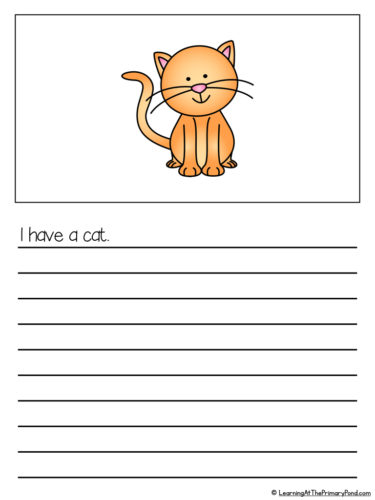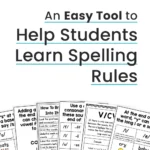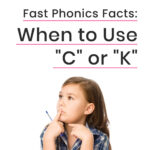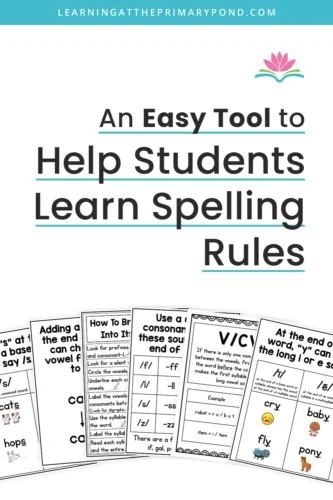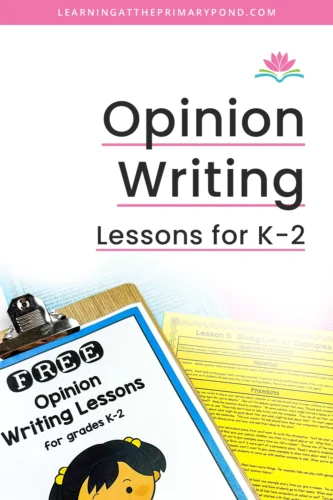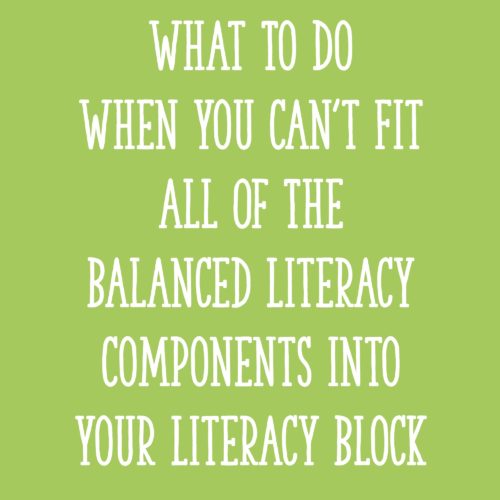If you teach the primary grades, you are likely no stranger to invented spelling!
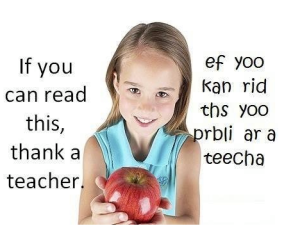
I love that meme! 🙂 Anyway, if you’re not familiar with the term, invented spelling is just “kid spelling” – kids’ attempts to spell words by using what they know about our language’s sound system and other words they know.
Invented spelling is a good thing. At the same time, I’m not saying that we shouldn’t teach proper spelling – because we should!!
But if we limit our students to writing ONLY words that they know how to spell, then we are crippling their desire and ability to communicate.
Nevertheless, when we invite our students to use invented spelling, some of them are hesitant to do so. Some of our kids really struggle with spelling risk-taking. They want to “get it right” and resist us when we ask them to just give it a try.
How do we help these kiddos overcome this fear? That’s exactly what today’s post is all about!
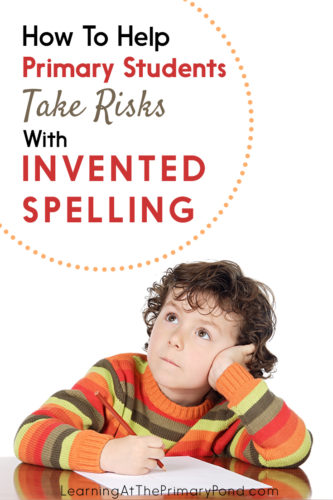
Photo Credit: Gelpi, Shutterstock
Set The Tone From The Start
The beginning of the school year is crucial in teaching our kids to take risks with spelling. Especially when I’m teaching Kinder or 1st grade, I make no mention of correct spelling during writing workshop – for weeks!
That might sound a little weird, I know. But I want my kids to understand how important it is to use spelling strategies, rather than worrying about spelling words correctly. Here are my answers to the questions my kids usually ask:
Q: How do I spell ______?
A: (Depending upon what strategies I’ve already taught) How could you figure that out? / What sounds do you hear? / What strategy could you try? / Is that a word you know?
Q: Did I spell _____ correctly?
A: What do you think?
Q: What if I can’t spell ______?
A: No problem! Just give it your best try and then keep on going.
Meanwhile, I’m teaching different minilessons on strategies the kids can use to spell words:
- Write the sounds you hear
- Say a word slowly and listen for the sounds
- Use an alphabet chart for help
- Listen for a word family
- Think about word parts or chunks that you know
- Look at the word wall
- Use a personal dictionary/dictionary
- Write one syllable at a time, etc.
The strategies that I teach depend upon the grade level. Regardless of the grade level, creating an anchor chart to display in the classroom (or even smaller versions for students to keep in their writing folders) can give kids a go-to reference for spelling strategies.
I avoid praising kids for correct spelling during writing workshop, especially during the first few months. Instead, I praise students’ strategy use and approximated spellings. This encourages them to keep taking risks!
Provide The Tools They Need To Be Successful
Okay, so by now you might be thinking that I don’t care about correct spelling during writing time. Not true! I just don’t emphasize it as I launch writing workshop, because my #1 goal for writing time is for kids to learn to communicate ideas.
Of course, correct spelling is one part of learning to communicate ideas, so I do teach it during other times of the day.
I prefer to have a word study block (about 20 minutes long) that is dedicated solely to having kids learning sound and spelling patterns. Words Their Way is my program of choice.
And after the first several weeks of school, I do start talking about correct spelling during writing workshop.
I teach minilessons about:
- How correct spelling helps our reader understand what we’ve written
- How to apply word study learning to writing time
- How we can proofread writing and get or give help with spelling
It’s important to help our kids make the connection between word study and writing. If a child isn’t applying knowledge of a word pattern to his/her writing, then the child hasn’t truly learned the pattern.
Highlighters, colored pencils, and pens are all fun tools that kids can use to highlight, circle, or underline spelling pattern examples in their writing. And it only takes 5 minutes to have kids search for word patterns in a piece they’re working on!
Teaching kids spelling/word study can actually help them learn to take more spelling risks during writing time – because they’re learning the tools they need for spelling success.
Explain The Risks Of NOT Taking Risks!
Once we start talking more about correct spelling as part of writing time, some kids will pull back. They might feel that I’m sending them mixed messages – do I want their spelling to be correct or not?
When I notice that kids are struggling with taking risks, I like to teach a minilesson on exactly this topic. We talk about what can happen when writers don’t take risks.
That minilesson might go something like this:
Writers, today I want to talk about spelling. When we’re writing, spelling words correctly can help our reader understand our work. But at the same time, what if we ONLY write words that we know how to spell? Then our ideas get trapped in our heads! We can’t write what we want to! And that’s not a good thing.
(At this point, I take out two different sheets of paper and display the first one under the document camera. You can click on either image to download both of them.)
This paper says, “I have a cat.” All of the words are spelled correctly. Okay. Not very interesting, though. What about the cat? What is the cat’s name? What makes the cat special? This doesn’t tell me much as a reader.
(At this point, I swap out the paper for the second page.)
Wow. This paper says, “I have a cat named Lindsey. She is black with white patches over her eyes. Lindsey is a very silly cat! She sleeps all night long, and she still sleeps a lot during the day. When she is awake, she likes to sit on my lap. Sometimes, she brings me a toy mouse. She meows, but she doesn’t chase the mouse when I throw it! Silly Lindsey. She really makes me laugh when she chases her tail. Lindsey is a funny and special cat.”
Now…some of these words are spelled incorrectly, aren’t they? Do you see any words that are spelled wrong?” (Very briefly discuss) “But let’s think about both of these pieces of writing.” (Hold them both up) “Which one was more interesting? And why?” (Students should conclude that the second one is more interesting because it has more details and gives more information.)
As readers, we enjoy the second piece of writing – it has more details and lots more information. Even though some of the words were spelled incorrectly, it’s still a better piece of writing overall.
Today and every day, as you’re writing, I’d like you to use your very best spelling. If you think a word might not be completely correct, fix it the best that you can and then keep on writing. I want you to share ALL of the ideas in your head – and not get stuck writing only the words that you know how to spell.
Conclusions
Dealing with spelling during writing time is kind of like walking a tightrope. You lean too far to the left, and you’re going to fall off. But lean too far to the right? Well, you’ll fall off that way, too!
There’s certainly no magic way to help kids find that perfect balance between correct spelling and risk-taking spelling. But I hope that this post gave you some ideas to try!
Looking for more ideas to help your little writers? Check out my writing units for:
Happy teaching!

